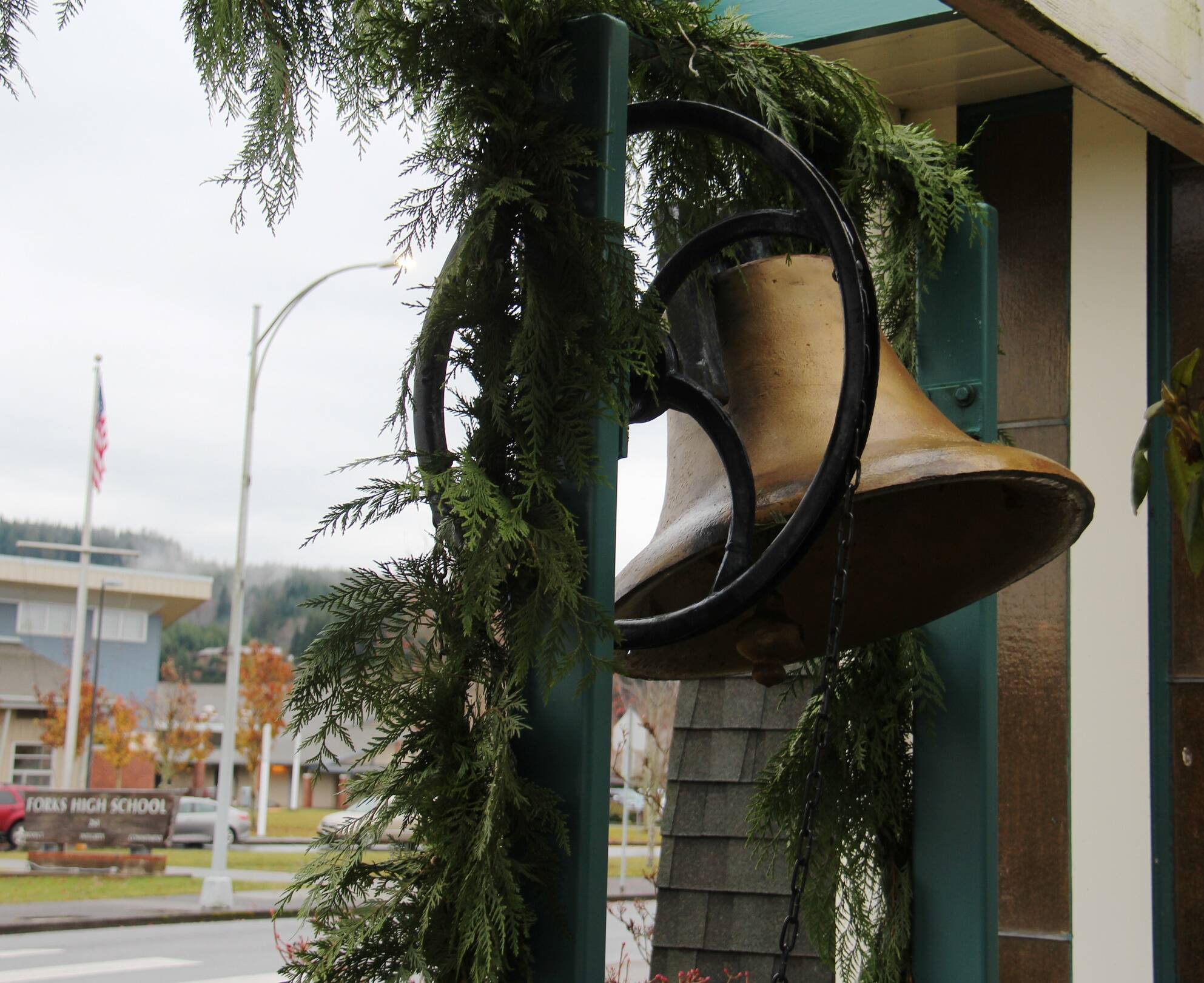History whispers all around us if we just take the time to listen. Like the Congregational Church bell that once tolled. Now mostly silent, standing watch it recalls a tale of community, tragedy, and resilience.
The story begins in the early 1900s when the original Congregational Church, at the corner of Calawah Way and Merchant Roads, held its place in the town’s beginnings. The church, a testament to the dedication of its founding members, including the benevolent Martha Merchant Maybury, who donated the land for the church, had a humble beginning in 1902, thanks to the efforts of Reverend Rufus Fletcher; a one-armed minister who not only built the Forks Church but also a church on the Quillayute Prairie.
Fate took a hand, and plans were set into motion in 1922 to relocate the church to downtown Forks. Another benevolent Forks resident, Frank Ackerly, had offered a lot on what is now W. Division Street, for the church and a new parsonage. A collective effort, driven by the spirit of community, saw tractors and trucks converging on September 10, 1922, to assist in this monumental task. It was a day marked both by hope and tragedy.
Cleve Maxfield, a local grocery merchant, lost his life during the relocation when a branch became entangled in the process. His effort to remove it resulted in his tragic death. In his memory, and before the sun had set, the women of the church swiftly organized a fundraising effort. They decided upon a bell, a memorial that would not only toll for services but also resonate through the town’s most pivotal moments. Church history shares that Reverend Davis was the one to travel to Clallam Bay to purchase the bell.
The bell rang out for church services but also to alert the community to danger. On January 9, 1925, it alerted all residents of our small town that fire was ravaging the storefronts and buildings on the East side of the main street. Again the bell was used during WWII alerting locals of blackouts and all clear orders, in case of enemy attacks.
The bell, its origin wrapped in mystery, was believed to have been salvaged from a shipwreck, adding an air of maritime mystique to its history. As the new church on Spartan Avenue was dedicated in 1955, the bell was the only item from the old church that was brought along, a witness to the town’s transformation.
Despite efforts in 1955 to trace the bell’s origin, the details eluded the curious minds of a committee formed for the purpose. Some speculated it was maybe even linked to a shipwreck near La Push, adding yet another element of maritime lore. A recent inspection of the bell does not show any markings that would help solve this mystery.
Today, the bell stands proudly at the front entrance of the Congregational Church on Spartan Avenue, a symbol of continuity and endurance. Passersby occasionally take the opportunity to make the bell sing, contributing to the ongoing melody of Forks’ history.
The echoes of the church bell serve as a reminder that, in every toll, there was a story—a story of a community that came together in joy, sorrow, and resilience, leaving a lasting legacy.



